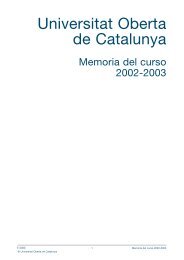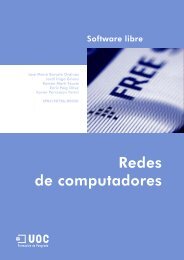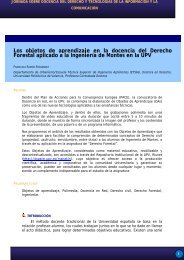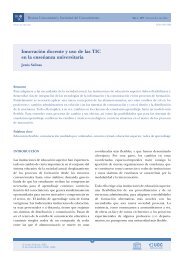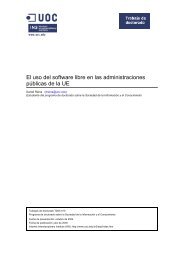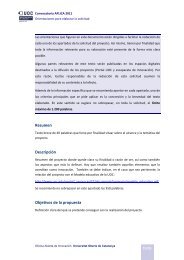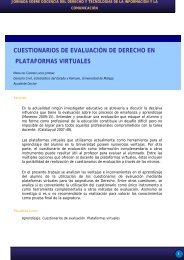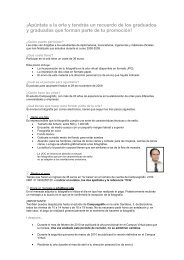e-governance and citizen information - Universitat Oberta de ...
e-governance and citizen information - Universitat Oberta de ...
e-governance and citizen information - Universitat Oberta de ...
Create successful ePaper yourself
Turn your PDF publications into a flip-book with our unique Google optimized e-Paper software.
E-<strong>governance</strong> <strong>and</strong> Citizen Information 117 Relationship with CitizensTable 2. Table of Comparative Response Times by Percentage 2002/2006Response Time Year 2002 Year 2006Less than 24 hours 43,75% 76,47%Less than 48 hours 12,50% 5,88%Less than 72 hours 6,30% 0,00%More than 72 hours 6,30% 11,76%No response 31,20% 5,88%Source: in-house productionAs can be seen, the improvement is substantial. On the one h<strong>and</strong> while in 2002, 6 of the 16contact mailboxes contacted did not respond to the request for <strong>information</strong> at all, in 2006only one of the emails went unanswered. While in 2002 the number of <strong>de</strong>partments that respon<strong>de</strong>dwithin 24 hours did not reach 50%, in 2006 this proportion rose to 76.47%; in otherwords, the great majority of emails were atten<strong>de</strong>d to in a relatively short time. In fact, onlythree emails took more than 24 hours to get a response.This data shows an increase, not only in the response in<strong>de</strong>x for emails, but also in the speedwith which they were <strong>de</strong>alt with by the Administration.In fact, the increase in <strong>de</strong>m<strong>and</strong> is one of the motors, or most important causes, of the processesof transformation that we are analysing. Despite the fact that it is not always like this,an important incentive factor for change is, in many cases, <strong>citizen</strong> pressure or pressure exertedby the Administration's users. When this pressure, un<strong>de</strong>rstood as the accumulation ofrequests for <strong>information</strong> or <strong>de</strong>m<strong>and</strong> for a service, creates a critical, even chaotic, situationor collapses the service, then the need to improve the service <strong>and</strong> change procedures becomesapparent, normally through the incorporation of ICTs, the <strong>de</strong>sign of a new <strong>information</strong>system, etc.In some ways it is as if the Administration only changes when it has no option but to do so. Inthis sense it is very illustrative that the origin of the most important transversal <strong>information</strong> systemin the Generalitat, the SAC, came in good part from <strong>information</strong> pressure exerted by <strong>citizen</strong>son Welfare offices – with a high level of presence in the territory – where they wentto <strong>de</strong>m<strong>and</strong> <strong>information</strong> about services <strong>and</strong> units about other <strong>de</strong>partments.The pressure of <strong>de</strong>m<strong>and</strong>, however, can take two different forms, <strong>de</strong>pending on the role <strong>de</strong>velopedby the administration. On the one h<strong>and</strong>, when there is clearly a collapse in particular<strong>information</strong> channels (because of the number of calls left unatten<strong>de</strong>d, replies taking an unreasonableamount of time, queues, etc.) the Administration acts reactively to solve the currentcrisis – then it tends to improvise <strong>and</strong> construct ad hoc solutions. A second possibilityhttp://www.uoc.edu/in3/pic




